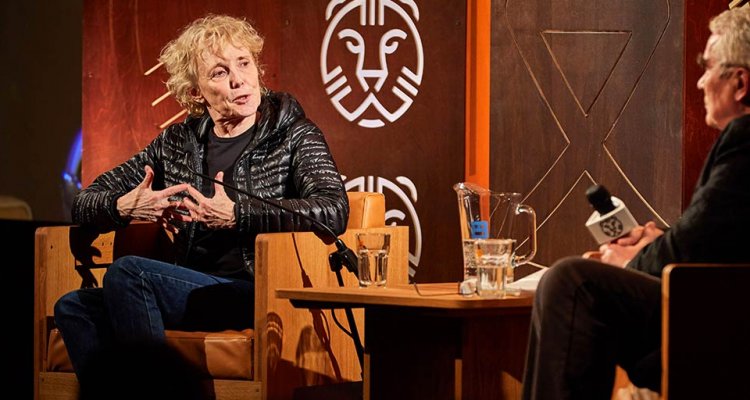This week International Film Festival Rotterdam is hosting a wide programme of Masterclasses at Le Jardin Hilton in central Rotterdam. We’ll be bringing coverage of cinematic luminaries including Claire Denis, Jia Zhang-ke and Cliff Martinez, as they recount the defining moments in their careers to date.
READ MORE: The Essentials: The Films Of Claire Denis
It is often said that Claire Denis is a director of rhythm, of accumulation, of images that fade into an ellipsis. To appreciate tension, to elongate it, to suffuse it with meaning — Denis’s work consists of this search, one that finds tenderness among horror and violence within serenity. It is a cinema of static will and empty spaces, of resisting denouement, of frightful, sensuous anticipation. This has led to controversy, that emptiest of words, and accusations of obstinacy, of needless difficulty. With this in mind, Denis’s Masterclass during IFFR 2019 was a smooth, convivial affair, one that both deviated from and indulged in the lazy, gendered musings above.
Moderated by former IFFR director Simon Field (a breezy figure of authority), the Masterclass offered a potted overview of Denis’s career, interspersed with selected sequences from her work. These included discussion of her films that consider colonial oppression of the sovereign self — “Chocolat,” “Beau Travail,” “White Material” — and those that interrogate the various horrors of desire, namely “Trouble Every Day,” “Bastards,” and “Let the Sunshine In.” But Denis was here mainly to speak about her newest film “High Life,” her first English-language effort, one unfortunately retitled “High Rise” by Mr. Field on at least four separate occasions. Ben Wheatley, or JG Ballard for that matter, would never have expected such extended publicity at an event celebrating one of Europe’s foremost cinematic storytellers. Denis handled it with grace and grim amusement. Adorned in black gilet, readily gesticulating, she first apologized for her difficulty expressing herself in English. For a lucid two hours, she was precise and illuminating. Here are some highlights
We were first shown a clip from the opening section of “High Life,” one of intense green and yellow fauna, of rhythmic tone and sound, of Robert Pattinson’s cosmonaut, who is attending both his baby girl and external spacecraft repairs.
“The little girl was great, and Robert Pattinson was so inside the project — he was trustful of me. I find this scene so touching. I realize the importance of music composed by Stuart A. Staples, who I’ve worked with for twenty years. For this film, I wanted to be far away from the solar system, in an old rusty ship, looking at the gel between baby and man. I wanted this scene to be as if it were at the end of the story rather than at the beginning. For me, the precious idea of the film is that of man alone, with no reason to stay on board but to care for the baby, to be responsible for this life. I didn’t want chronological order.”
“The only thing growing apart from the baby is the garden — the place is still earthly and alive. I was reading a lot about space, and how it is important for the space programme to be able to grow plant and vegetables, to have something fresh and growing, not to have just dried powders. This is why I present this little soil, this mist falling on the leaves. It is a small paradise on that ship, the paradise of Eden.”
#HighLife – new clip pic.twitter.com/yYaGlBFo4Z
— sally (@sallyvg) January 29, 2019
Mr. Field suggested that the design of a ship, the spacesuits, and the baby’s cot made out of bits and pieces indicated a cupboard flying through space.
“It is a jail sent into space, outside the solar system. Pattinson’s character has been in space for five or six years. It is a half-abandoned place and he is alone with the baby — his companions are not there. The conditions in space do not require you to be a soldier, a man of force, or a white knight.”
“We copied the space costume from Russian cosmonauts, which are not so out of fashion — they still exist. I wanted the ship to look like a jail, no more than that. I was in a space center in Cologne in Germany where they train cosmonauts. After the cosmonauts spend a few months in space they have to rehabilitate them, because their muscles, bones, and eyes need to be recuperated. Much of the equipment there was Russian. I said, ‘This computer looks like from the ‘80s, and they said, ‘It’s so solid we don’t want to change.’ I found something reassuring in that time was already asserting itself.”

